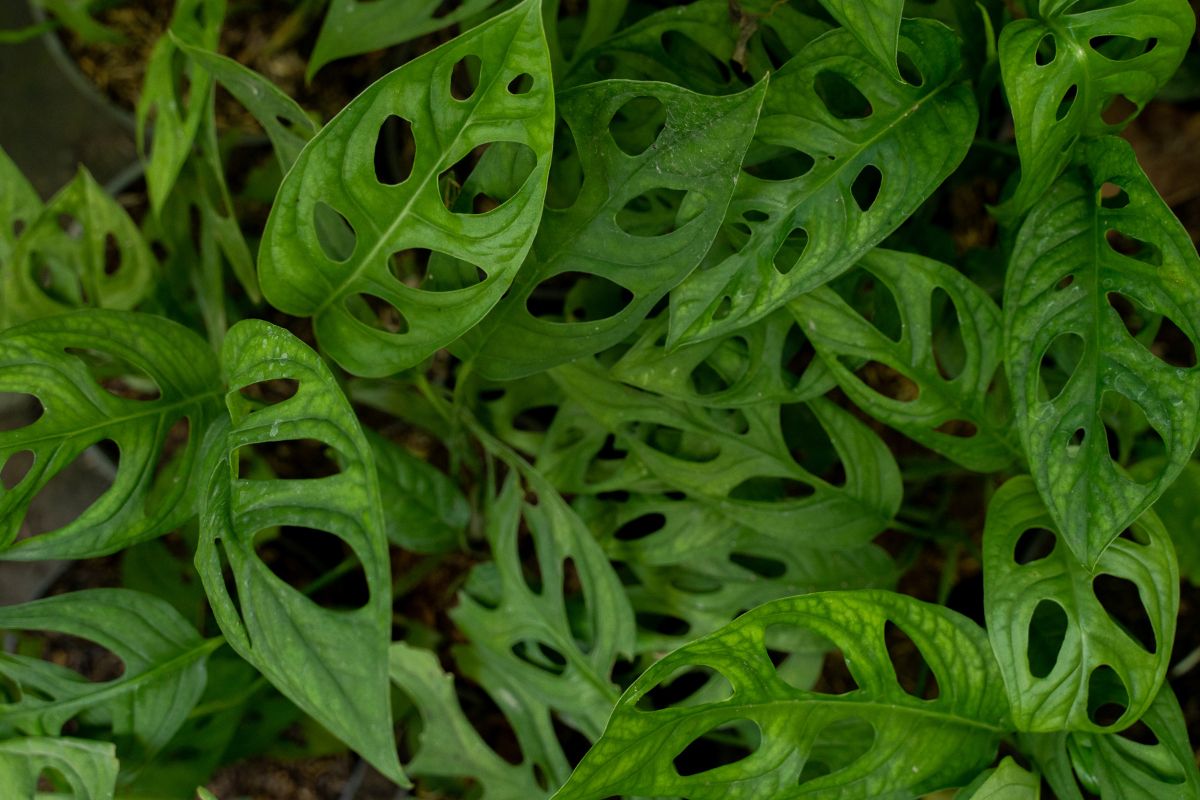Houseplants are taking the world by storm. If you love having an ‘inside jungle’ for yourself, then it’s likely that you have a cheese plant.
These plants are so popular due to their unique, distinctive appearance, and look great in any home.

If you really love your swiss cheese plant, then you may want to propagate it so that you can create your own house plants from the cuttings.
If you need some help, then follow this guide of how to propagate your swiss cheese plant.
We’ll also go over a little bit of background information on swiss cheese plants, and the best way to keep your plant thriving.
Read on to find out!
About Swiss Cheese Plants
Swiss cheese plant is the colloquial name for a Monstera deliciosa, or the split leaf philodendron.
This is a flowering plant native to tropical regions such as southern Mexico, and South America.
We call them swiss cheese plants due to the openings and holes on the surface of the leaves, which allows more light to filter through to the lower shoots of the plant.
This is an evolutionary trait due to the fact that these plants would grow in the more shadowy areas of the jungle floor.
The swiss cheese plant is relatively low maintenance, and looks amazing when fully grown and thriving. However, you will need some space for this plant due to the large, sprawling green leaves.
You can also propagate and grow your own swiss cheese plant if you follow our guide below!
How To Propagate Swiss Cheese Plant
Swiss cheese plants are actually really simple to propagate. You can grow new plants from the seeds or from the cuttings, but using cuttings is a more popular and easier method of propagating this plant.
To propagate a swiss cheese plant, you will need to use scissors to take some cuttings.
These cuttings only need to be a few inches long, but you should select some with at least one node so that the leaves and roots can grow from there.
A node is the small bump on the stem from which leaves and roots will grow. You have to have a node on your cutting if you want to propagate the plant.
We would recommend choosing a stem cutting with at least one node, and a few leaves for the best results.
It should only take around 2-3 weeks to start to see roots on your cuttings if you keep them in water, and around 2 months to see the roots grow to about 4 inches.
Once you have your cuttings, you may be wondering whether it is best to propagate the swiss cheese plant in soil or water.
For most, it is easier to propagate in water, as you can see how far along the roots are while they grow.
But, if you propagate in soil, then the cutting is already planted, and you don’t have to move the cutting from the water and into soil when it’s ready.
It is really down to you and your personal preference.
So, once you have found a node, you can take your cutting. Remove the cutting from the parent plant with a clean scissors.
If you are going to root the cutting in potting soil, then it is a good idea to dip the end of the cutting into a rooting hormone to boost growth, but if you want to root in water, then you can skip this step.
The next step is to take either your potting soil, or your cup of water, and ensure the cutting is inside, with the node submerged.
Then, you will need to place the cutting in indirect, but bright sunlight for the best results.
Monitor your cutting, and once the roots begin to grow around 3-4 inches, it is time to plant the cutting in soil (if you used water to propagate).
Then, simply care for the cutting in the same way that you would for the parent plant. If you’re unsure of the best environment for your swiss cheese plant, we’ll cover that in the section below.

How To Care For A Swiss Cheese Plant
Swiss cheese plants are rather hardy, and they can be fairly simple to care for. However, they are mildly toxic, so be sure to keep them away from pets and small children.
Swiss cheese plants are grown on a dimly lit tropical jungle floor, so they are pretty good in a range of light conditions.
However, you should avoid direct sunlight as this could burn the leaves.
We would recommend a spot with medium light, as if it is left in an area that is too dark then the holes on the leaves may not develop or bloom properly.
As they come from tropical regions, these plants prefer moderate to high temperatures. You should try to keep the temperature from 60 to 85 degrees fahrenheit if you want the perfect conditions.
They will not do well in dry air or colder conditions, but they do thrive in humidity, so you may want to have a humidifier, or try to mist the leaves from time to time.
In terms of watering, you will need your swiss cheese plant in a pot with drainage holes. If the water cannot drain, then you could run the risk of root rot.
We would recommend watering until it runs out of the bottom, and wait until the top 2-3 inches of soil is almost completely dry before watering again.
This should ensure that your swiss cheese plant stays in the best possible condition, and is thriving, ready for propagation.
Final Thoughts
To summarize, with this guide, it has never been easier to propagate a swiss cheese plant. It is a fairly simple process, and you can propagate by cutting and leaving in soil or water.
It should only take a few weeks for the roots to begin growing, and then you can pot and care for your swiss cheese plant cutting as normal!
- Best Hanging Plant For Low Light - September 4, 2023
- Best Indoor Plants Florida - August 28, 2023
- Best Plants For Bathroom Smells - August 21, 2023








